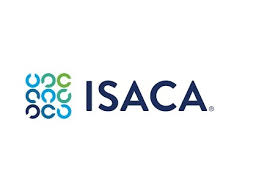ANANDA Scientific and NYU Grossman School of Medicine Announce First Patient Enrolled in the Clinical Trial for Opioid Sparing in Participants with Radiculopathic Pain
ANANDA Scientific Inc., a biotech pharmaceutical company, and NYU Grossman School of Medicine today announced that the first patient has been enrolled in a clinical trial evaluating Nantheia™ A1002N5S, an investigational drug using cannabidiol in ANANDA’s proprietary Liquid Structure™ delivery technology. This trial is evaluating Nantheia™ A1002N5S for Opioid Sparing in the treatment of participants with Radiculopathic Pain Syndromes.
This press release features multimedia. View the full release here: https://www.businesswire.com/news/home/20220308005059/en/

(Photo: Business Wire)
This trial is being conducted at NYU Grossman School of Medicine, led by Stephen Ross, MD, Associate Professor of Psychiatry. Funding for this trial is from the National Institute of Drug Abuse (NIDA), with additional support from ANANDA. The NYU Grossman School of Medicine is No. 2 in the nation for research in the 2022 U.S. News & World Report “Best Graduate Schools” rankings.
“We are excited to get this important trial underway and expanding research on therapeutic alternatives to opioid pharmacotherapies,” said Dr. Ross. “This research protocol creates an opportunity for the possible development of evidence-based CBD medicinal products to reduce opioid intake and pain.”
“We are very pleased to be continuing our collaboration with NYU Grossman School of Medicine. We are impressed by the scientific rigor and professionalism of the NYU team in putting a cutting-edge program in place to test the efficacy of this very promising drug,” said Sohail R. Zaidi, ANANDA’s CEO. “The initiation of patient enrollment in this study is an important step in efforts to provide patients with Radiculopathic Pain with an alternative to the use of Opioids for the management of pain.”
This is a randomized, double-blind, placebo-controlled trial with 40 participants receiving four months of treatment with Nantheia™ A1002N5S, or placebo with a follow-up after 2 months. The primary efficacy outcome is a change in opioid maintenance dose from baseline to the end of the treatment period. Safety and tolerability of CBD will also be assessed throughout the trial. (ClinicalTrials.gov Identifier: NCT04760613).
ABOUT NANTHEIA™ A1002N5S
Nantheia™ A1002N5S is an investigational drug that uses CBD in ANANDA’s propriety Liquid Structure delivery technology. Pre-clinical and initial clinical studies show that ANANDA’s Liquid Structure™ delivery technology (licensed from Lyotropic Delivery Systems (LDS) Ltd. in Jerusalem, Israel) enhances the effectiveness and stability of CBD. Nantheia™ A1002N5S is an oral product with 50 mg of CBD per soft gel capsule.
ABOUT ANANDA SCIENTIFIC
ANANDA is a leading research-focused biotech company pioneering high-caliber clinical studies evaluating therapeutic indications such as PTSD, Radiculopathic Pain, Anxiety and Opioid Use Disorder (Mt. Sinai, UCLA). The company employs patented delivery technology to make cannabinoids and other plant derived compounds highly bioavailable, water soluble, and shelf-life stable and focuses on producing effective, premium quality pharmaceutical products. Consistent with its strong research-based data, the company also has a growing pipeline of nutraceutical over-the-counter products. The company has successfully launched these products in the US, Australia, and the UK, with expansion planned into additional markets such as the EU, China, Africa, and other countries in Asia. The company is expanding its research base through multiple sponsored research agreements with universities to diversify its technology portfolio.
ABOUT OPIOID SPARING FOR PATIENTS WITH CHRONIC NON-CANCER RADICULOPATHY
Chronic pain (pain lasting 3 or more months) (1) is a highly prevalent public health problem (2) (3), and constitutes the greatest economic burden of any medical condition (4). Of the Chronic Non-Cancer Pain (CNCP) conditions, radicular pain disorders (particularly low back pain) have particularly high rates of opioid prescribing (5), and higher opioid doses predict poorer functional outcomes in this cohort of chronic pain patients (6). Estimates of the prevalence of opioid use disorders (OUDs) in CNCP range from 5% in a meta-analysis (7) to 20-35% (8), (9), (10), (11). All of this notwithstanding, chronic opioid therapy (COT) prescribing for CNCP increased markedly between 1990 and 2010, and is one of the root causes of the current opioid epidemic (12). Our goal is to develop an intervention to reduce opioid use in patients with radicular CNCP syndromes receiving moderate to high-dose COT to safer doses while at the same time maintaining or improving pain management.
REFERENCES
1. Dowell D, Haegerich TM, Chou R. CDC Guideline for Prescribing Opioids for Chronic Pain – United States, 2016. MMWR Recomm Rep. 2016;65(1):1-49. Epub 2016/03/18. doi: 10.15585/mmwr.rr6501e1. PubMed PMID: 26987082.
2. Nahin RL. Estimates of pain prevalence and severity in adults: United States, 2012. The journal of pain: official journal of the American Pain Society. 2015;16(8):769-80. Epub 2015/06/02. doi: 10.1016/j.jpain.2015.05.002. PubMed PMID: 26028573; PMCID: PMC4562413.
3. Institute of Medicine Committee on Advancing Pain Research C, Education. The National Academies Collection: Reports funded by National Institutes of Health. Relieving Pain in America: A Blueprint for Transforming Prevention, Care, Education, and Research. Washington (DC): National Academies Press (US), National Academy of Sciences.; 2011.
4. Gaskin DJ, Richard P. The economic costs of pain in the United States. The journal of pain : official journal of the American Pain Society. 2012;13(8):715-24. Epub 2012/05/23. doi: 10.1016/j.jpain.2012.03.009. PubMed PMID: 22607834.
5. Webster BS, Verma SK, Gatchel RJ. Relationship between early opioid prescribing for acute occupational low back pain and disability duration, medical costs, subsequent surgery and late opioid use. Spine. 2007;32(19):2127-32. Epub 2007/09/01. doi: 10.1097/BRS.0b013e318145a731. PubMed PMID: 17762815.
6. Kidner CL, Mayer TG, Gatchel RJ. Higher opioid doses predict poorer functional outcome in patients with chronic disabling occupational musculoskeletal disorders. The Journal of bone and joint surgery American volume. 2009;91(4):919-27. Epub 2009/04/03. doi: 10.2106/jbjs.H.00286. PubMed PMID: 19339577; PMCID: PMC2665041.
7. Higgins C, Smith BH, Matthews K. Incidence of iatrogenic opioid dependence or abuse in patients with pain who were exposed to opioid analgesic therapy: a systematic review and meta-analysis. Br J Anaesth. 2018;120(6):1335-44. Epub 2018/05/26. doi: 10.1016/j.bja.2018.03.009. PubMed PMID: 29793599.
8. Sullivan MD, Von Korff M, Banta-Green C, Merrill JO, Saunders K. Problems and concerns of patients receiving chronic opioid therapy for chronic non-cancer pain. Pain. 2010;149(2):345-53. Epub 2010/03/26. doi: 10.1016/j.pain.2010.02.037. PubMed PMID: 20334974; PMCID: PMC3318978.
9. Boscarino JA, Rukstalis M, Hoffman SN, Han JJ, Erlich PM, Gerhard GS, Stewart WF. Risk factors for drug dependence among out-patients on opioid therapy in a large US health-care system. Addiction (Abingdon, England). 2010;105(10):1776-82. Epub 2010/08/18. doi: 10.1111/j.1360-0443.2010.03052.x. PubMed PMID: 20712819.
10. Juurlink DN, Dhalla IA. Dependence and addiction during chronic opioid therapy. Journal of medical toxicology : official journal of the American College of Medical Toxicology. 2012;8(4):393-9. Epub 2012/10/18. doi: 10.1007/s13181-012-0269-4. PubMed PMID: 23073725; PMCID: PMC3550262.
11. Boscarino JA, Hoffman SN, Han JJ. Opioid-use disorder among patients on long-term opioid therapy: impact of final DSM-5 diagnostic criteria on prevalence and correlates. Substance abuse and rehabilitation. 2015;6:83-91. Epub 2015/09/01. doi: 10.2147/sar.S85667. PubMed PMID: 26316838; PMCID: PMC4548725.
12. Vadivelu N, Kai AM, Kodumudi V, Sramcik J, Kaye AD. The Opioid Crisis: a Comprehensive Overview. Curr Pain Headache Rep. 2018;22(3):16. Epub 2018/02/25. doi: 10.1007/s11916-018-0670-z. PubMed PMID: 29476358.

View source version on businesswire.com: https://www.businesswire.com/news/home/20220308005059/en/
![]()
Disclaimer: This content is distributed by Business Wire India.



